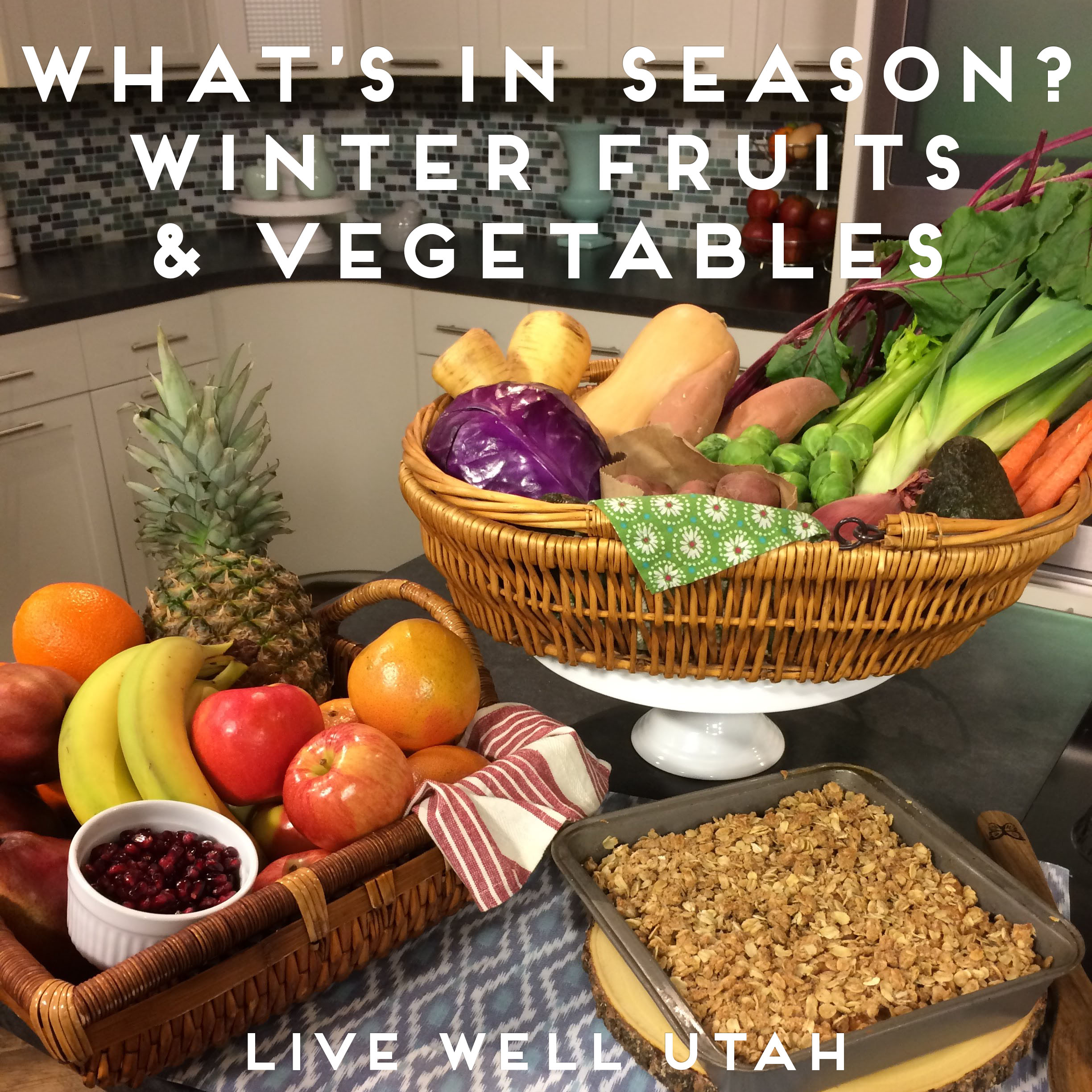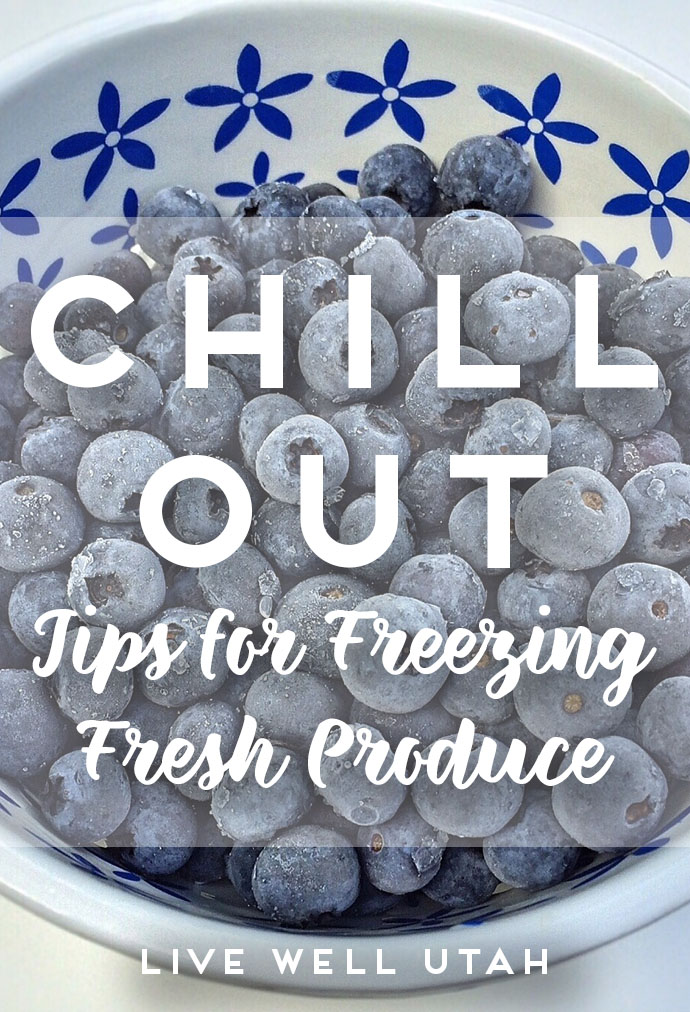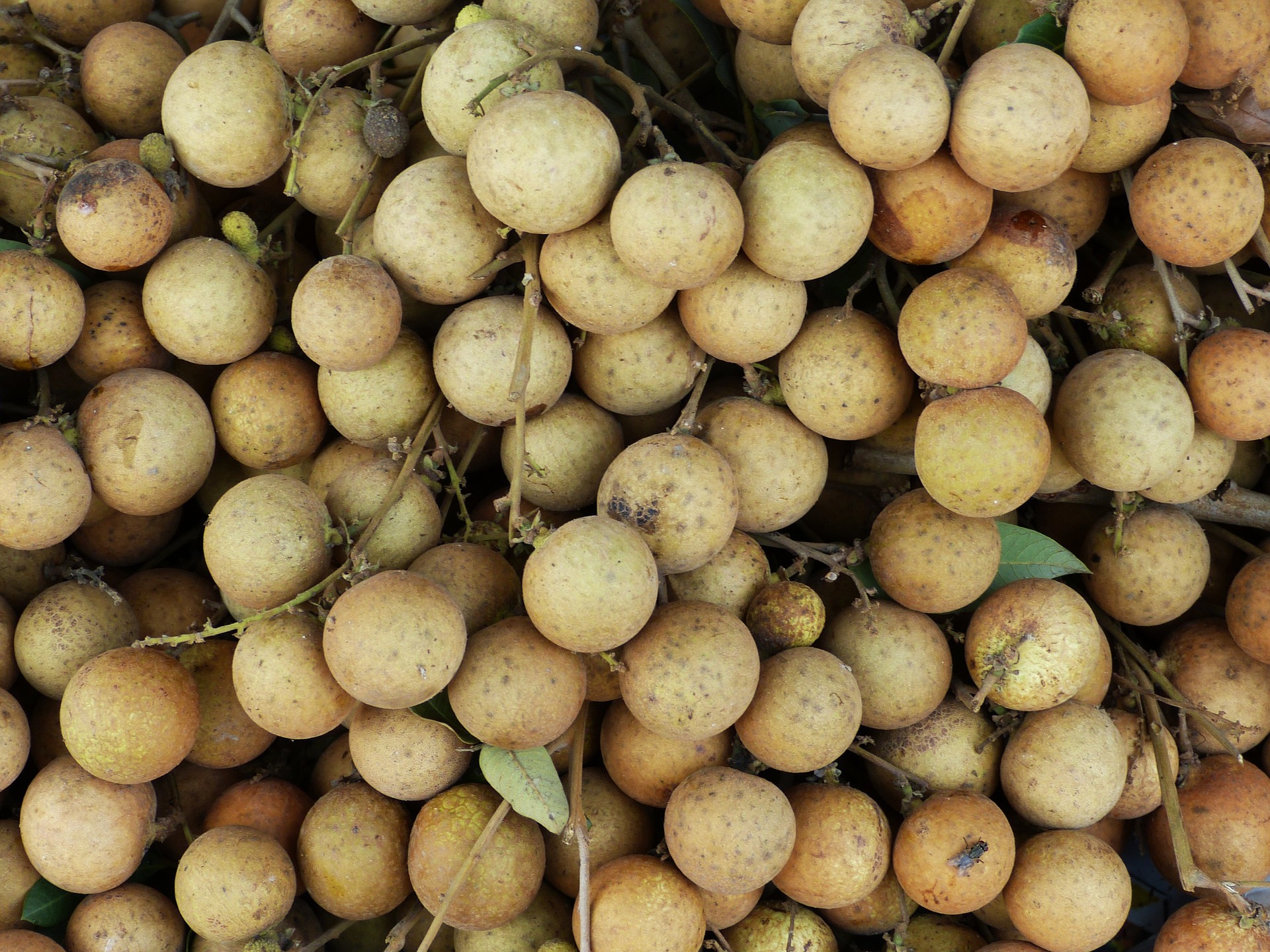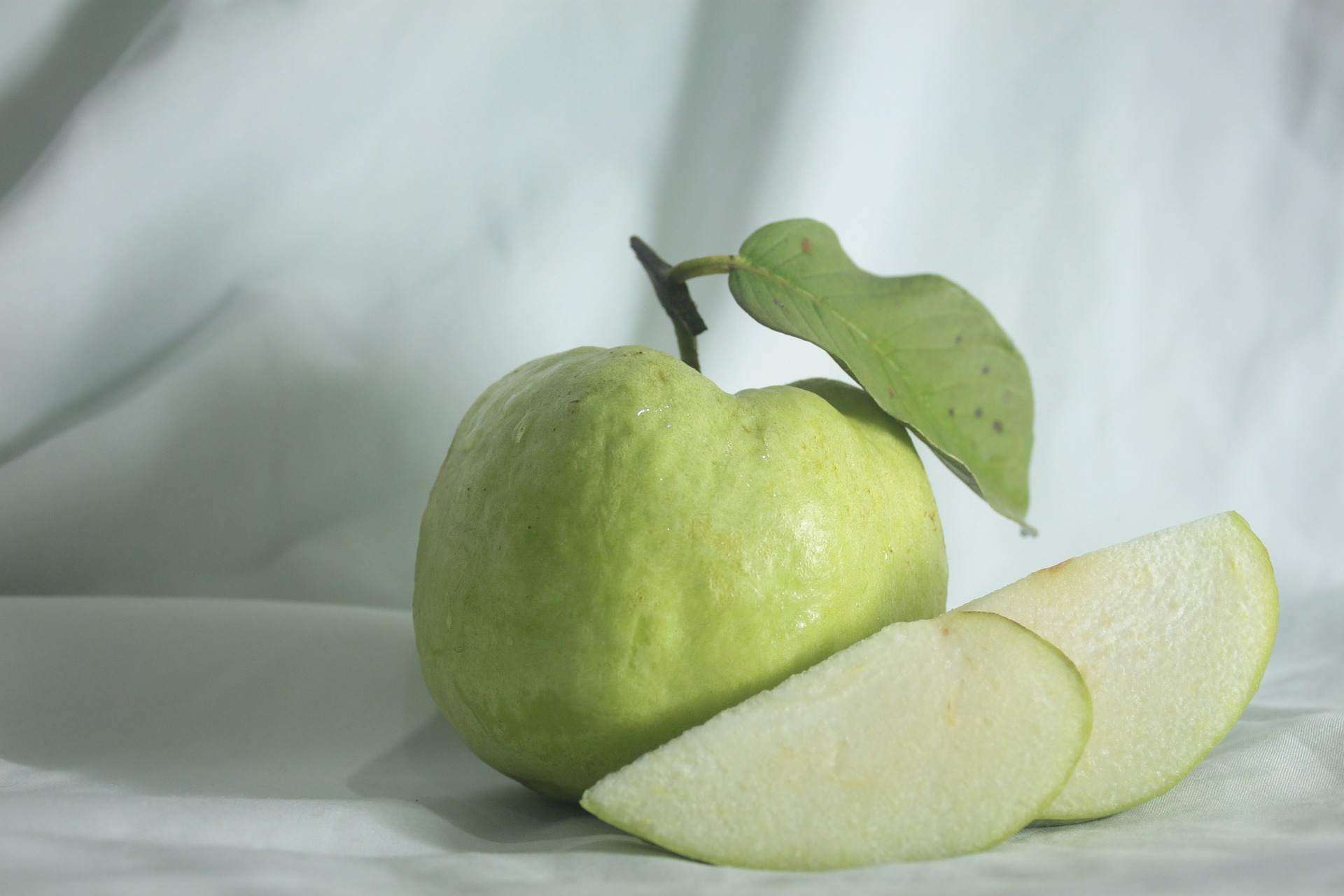What’s in Season? Winter Fruits and Vegetables
 Keep your menu plan fresh with seasonal fruits and vegetables — even in wintertime! We’ve got a recipe roundup for you, plus two new recipes at the end; one for pineapple pear crisp and the other for balsamic and bacon Brussels sprouts. Tune in to Studio 5 on Monday to see Live Well Utah Editor Marta Nielsen demonstrate these new recipes with Brooke Walker.
Keep your menu plan fresh with seasonal fruits and vegetables — even in wintertime! We’ve got a recipe roundup for you, plus two new recipes at the end; one for pineapple pear crisp and the other for balsamic and bacon Brussels sprouts. Tune in to Studio 5 on Monday to see Live Well Utah Editor Marta Nielsen demonstrate these new recipes with Brooke Walker.
Eating in season is something we think about in the summertime when our gardens are bursting with raspberries, tomatoes, peaches and zucchini, but you can eat in season all year long! Stores may carry out-of-season foods in the winter, but you’ll usually find lower prices and higher quality produce when you shop in season.

It’s easy to keep winter-season fruits like apples, bananas, grapefruit, oranges and pears on your counter for healthy snacking. Pineapple and pomegranate are also in season, and can be purchased already prepped and ready to eat, or you you can save on costs and do your own prep-work and keep the ready-to-eat fruit in the fridge. If you have healthy food options visible and accessible, you’re more likely to make healthy choices!

There are also many vegetables that are in season in the winter, such as avocados, beets, Brussels sprouts, cabbage, carrots, celery, kale, leeks, onions, parsnips, potatoes, sweet potatoes and winter squash. These veggies work perfectly for those warm-me-up foods we love to eat in the winter like soup, or oven-roasted veggies.
Try these recipes that use winter fruits and vegetables:
Snacks and Treats:
- Frozen Banana Yogurt Bites
- Banana “Ice Cream”
- Apple Pie Smoothie
- Easy Apple Roses
- Apple Cranberry Crisp
- Apple Cranberry Bites
- Applesauce Bread
- Cinnamon Apple Chips
- Homemade Applesauce
- Chocolate Avocado Frosting
- Cranberry Orange Iced Oatmeal Cookies
- Winter Squash Wonder Pie
Salads and Sides:
- Pomegranate Salsa
- Pineapple Pear Salsa
- Jicama Orange Salsa
- Balsamic Roasted Brussels Sprouts and Carrots
- Roasted Vegetables
- Slow Cooker Sweet Potato Casserole
- Winter Squash 4 Ways
- Roasted Chili Lime Potatoes
- Apple and Poppyseed Coleslaw
- Citrus Chicken Salad
- Sweet Potato and Orange Salad
Main Dishes:
Pineapple Pear Crisp
This gingery crisp is a little bit tropical, but still a warm-the-belly kind of dessert that is perfect for colder months. This recipe maximizes the sweetness and flavor of the fruit with minimal added sugar and oil, and uses hearty whole grains in the topping. Serve it topped with frozen yogurt for added decadence. Serves 6 people.
Ingredients:
- 3 ripe pears*
- 2 c ripe pineapple (about ½ a pineapple)
- ¼ t cinnamon
- 2 T brown sugar (or honey)
- 1 t freshly grated ginger (or ¼ t ground ginger)
For the topping:
- 1 cup rolled oats
- 1/3 cup whole wheat flour
- 2 T brown sugar
- 1 t fresh grated ginger (or ¼ t ground ginger)
- ¼ t nutmeg
- 3 T melted butter (or coconut oil for added tropical flavor)
Preheat oven to 325 F.
Chop pineapple into ½-inch pieces and set aside in a medium-sized mixing bowl (be sure to get all the pineapple juice left from cutting and chopping into the bowl). Peel, core and chop pears into ½-inch pieces, and mix with pineapple. Add cinnamon, brown sugar (or honey) and fresh ginger to the fruit, and stir so that it is coated evenly. Transfer fruit to a 9×9 baking dish.
To prepare topping, mix dry ingredients in a medium-sized bowl until well combined. Add melted butter, and stir until mix loosely holds together. Spoon crumble mix evenly over fruit, and bake for 30 minutes. Cover crumble with foil, to prevent over-browning, and bake an additional 5 minutes (or until pears are tender).
*Be sure to use ripe pears. Unripe pears will not soften sufficiently when baked. Bosc and D’anjou pears work nicely in this recipe.
Bacon and Balsamic Brussels Sprouts
This out-of-this-world Brussels sprouts recipe will convert even the most skeptical taste testers.The Brussels sprouts are are roasted, tossed with a zesty balsamic vinaigrette, and topped with bacon crumbles and pomegranate arils—what’s not to love? Recipe serves 4 generously.
Ingredients:
- 4 pieces thick-cut bacon
- 2 lbs. Brussels sprouts
- 2 T olive oil
- Salt and pepper to taste
- ½ cup pomegranate arils (approximately 1 small pomegranate)
Balsamic Dressing:
- 2 T olive oil
- 2 T balsamic vinegar
- ½ t maple syrup
- ½ t prepared mustard (Dijon or whole grain)
- 1 clove garlic, pressed or minced
- Salt and pepper to taste
Preheat oven to 400 F.
Place bacon on a foil or parchment-lined baking sheet, and bake for 10 minutes, or until crispy. When bacon is cooked to your liking, remove from baking sheet and set aside. Brush around rendered bacon fat to evenly coat lined baking sheet, and drain off any excess (this will enhance the flavor of the Brussels sprouts as they roast).
Meanwhile, prepare Brussels Sprouts by trimming the ends and cutting in half. Toss Brussels sprouts with oil, salt and pepper. Next, evenly arrange Brussels sprouts, cut side down, on the lined baking sheet used to cook the bacon. Roast for 20 minutes, or until sprouts are easily pierced with a fork. For smaller Brussels sprouts, 20 minutes will yield sprouts cooked soft all the way through. If you prefer a little crunch left in your vegetables, check doneness at 15 minutes.
While Brussels sprouts roast, crumble the cooked bacon and prepare the dressing. Whisk together all ingredients in a liquid measuring cup for easy pouring. If you are seeding your own pomegranate, versus buying the arils alone, you can also do this while the Brussels sprouts roast.
Transfer roasted Brussels sprouts to a serving dish, and top with balsamic dressing. Stir until evenly distributed, and top with crumbled bacon and pomegranate arils.
 Marta Nielsen is the editor of Live Well Utah. She did not attend Utah State University (she graduated from another university whose colors are red and white), but loves working for USU Extension. Marta loves to cook and eat, garden, craft, travel, and read. She makes specialty cakes for family and friends as a hobby, and has been talked into making a few wedding cakes in the past. She and her husband have two small children, and live in Salt Lake County.
Marta Nielsen is the editor of Live Well Utah. She did not attend Utah State University (she graduated from another university whose colors are red and white), but loves working for USU Extension. Marta loves to cook and eat, garden, craft, travel, and read. She makes specialty cakes for family and friends as a hobby, and has been talked into making a few wedding cakes in the past. She and her husband have two small children, and live in Salt Lake County.
See more contributor bios here.
 During the summer, fruits and vegetables are abundant — so don’t waste the opportunity for fresh produce because you may not have time to bottle it. Chill out: Use your freezer!
During the summer, fruits and vegetables are abundant — so don’t waste the opportunity for fresh produce because you may not have time to bottle it. Chill out: Use your freezer!











